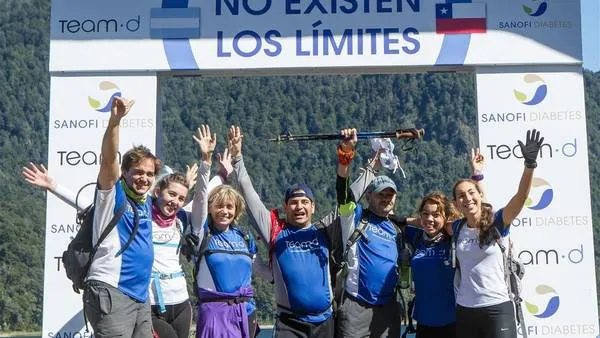"There are no limits."The phrase that can be read on so many screens and in so many papers lay at the Summit of the Lanín volcano perhaps with more force than in any other context.I was there, as imposing as that neuquino landscape nestled between lakes and valleys, right in the arch that symbolized the end of a journey that - prisonly - confirmed that thesis: that of five people with type 1 diabetes that ascended, on foot, 50 kilometerson the slope of the volcano.
The postcard and the journey in question belong to the last weekend of February, when the five members of Team D, a running group for diabetic people, made the tour in two days.An escalation that sought to transcend personal improvement.“The idea is to convey a message.The goal was to serve as an example, to show that you can and motivate others, ”says Clarín Carolina Rieger, a graduate in Nutrition and Coordinator of the team on the essence of a movement called" with diabetes you can ".A motto that, for Carolina, can move to any corner of humanity."With diabetes you can, and with the excuse you have too," he adds.
There were 8 hours of trekking on the first day and 5 hours the second, with the crossing to Chile in the middle and with a challenge beyond the slope and distance: to control glucose levels.“Maintain controlled blood glucose is essential for the success of the crossing.There are two risks: to have a hypoglycemia, that blood sugar goes down a lot and losing consciousness or being very high, which will manifest with lack of oxygen, headache and nausea, ”they explained from Team D in the previous one.Although three doctors accompanied the five athletes, each one was allowed to do "their own experience.""If something was not right, I told it in a group," explains Carolina.
Team D members are measured glucose levels before leaving.
Another of the possible inconveniences was the "residual effect of insulin.""During the trekking they are alert to the symptoms and correcting with food or their quick insulin injections the values that are registering, but at night, insulin continues to act and it is not possible to anticipate how much each one will affect the values of each one,"From the organization.Therefore, as a caution, the members of the team slept in doubles in the camp located in the middle of the route.
The first day, marked by the cold, they toured 25 kilometers, in which it went through the top of Cerro Colorado.“I hope this event is a seed so that everyone can see what can be achieved taking care, with all the imperfections that one can have as a diabetic.The important thing is to make you want and cheer up, ”said Marcelo Isnardi after the first day, a grandfather who can speak with authority in the field: in his curriculum there is a climb to the Himalayas.
“I left higher than recommended, probably for fear and anxiety.But I was drinking water and correcting, ”Adriana Skudicky told her difficulties, who made her first experience in this type of journey and on the second day she managed to regulate her sugar levels.A learning for those who eight years ago, at 48, began to deal with diabetes and toured a longer path than the lanin.One that was from the days when he was not encouraged to run without his wallet in tow to the fullest times.
The challenge also had other protagonists who confirm that "with diabetes you can."As Leti Vázquez, a 30 -year -old lawyer, whom from Team D they consider "a fundamental pillar of the team."Or Samantha Burgos and Christian Galli, who always run with the smile in tow in spite of the difficulties.
Team D emerged in 2012 on the initiative of Rieger and Valentina Kogan, Archera of the Handball National Team, who isType 1 diabetics. Then the auspices of Sanofi arrived to make it possible for 25 people to train, with two teachers, on Mondays and Wednesdays at the Rosedal de Palermo.It is a small group but that aims to attract attention to society."This is inspirational, we do it because we know what this leads to people to cheer up," says Rieger.
“Usually those who arrive do it with fear, they do not dare to do much.But after a working time they are released and transmitted their knowledge to others, ”adds Carolina, who emphasizes that“ it is a traditional running, not formed with elite athletes but with a group of people who make it easier to approach”
From their nutrition training and their experience in the area, Rieger says that "taking care of themselves, diabetics can do everything, except for some very specific exception in which coagulation can be put at risk, as in paratrooper."Today, diabetics "only have to do experience in the management of difficulty."With those collections, they can.Like all.


